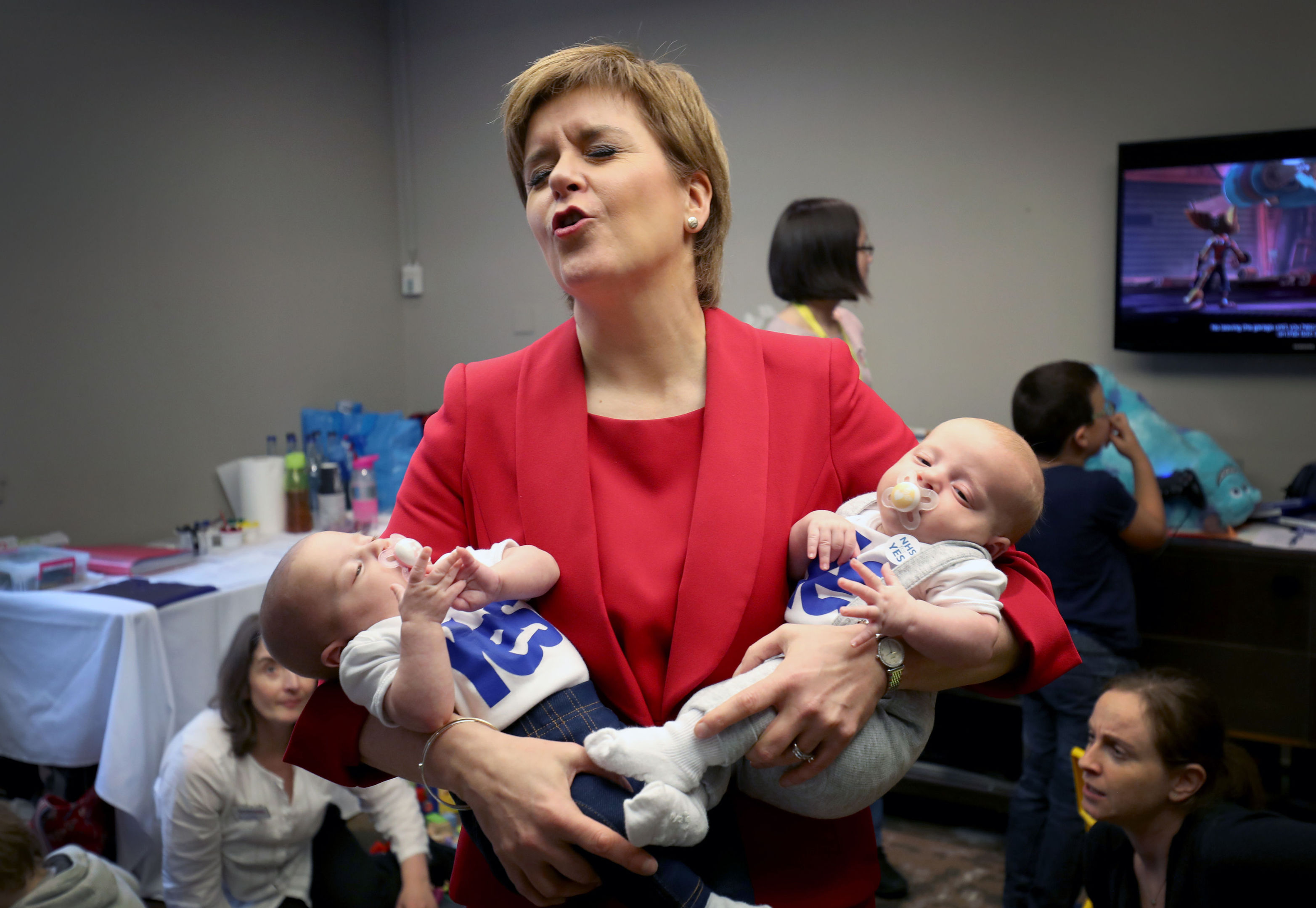
NICOLA STURGEON’S big speech had a raft of major announcements last week.
A not-for-profit state-owned energy firm, council tax exemption for care leavers and, of course, jokes about the Prime Minister’s conference fiasco all went down a storm at the SNP conference in Glasgow.
Despite the competition, doubling childcare funding was one of the most eye-catching moments.
Providing 30 hours of childcare a week for every three and four-year-old and eligible two-year-old by 2020 has been a party promise since 2014.
What was new was a hike in funding to £840 million a year.
The investment is huge but, experts warned, successfully delivering a step-change in nursery hours might need more than money to cope with the demand for skilled staff.
The First Minister’s announcement was backed by her former poverty tsar.
Naomi Eisenstadt says the extra cash will help struggling families by removing a £350 a month burden on their finances but money alone will not close the attainment gap or deliver better life-changes for children from poorer areas.
She reckons the people looking after pre-school pupils should be paid more if the attainment gap between the richest and poorest is to be closed.
The Oxford academic said: “It’s about who you are training. You need high level graduates alongside what used to be called nursery nurses.
“Scotland used to have a fine tradition of producing nursery nurses. Basically we don’t pay people enough.
“As an anti-poverty measure, it is very sensible, but it won’t close the gap.
“If the wages aren’t high enough you don’t attract the right candidates.”
We reported last month that councils fear the flagship policy of doubling childcare provision from 15 hours a week to 30 will cause a recruitment crisis.
A report by local authority umbrella body COSLA raised doubts about the work required to hit the Scottish Government’s target, with an estimated 14,000 additional staff required.
There are, says COSLA, “significant challenges in increasing the workforce and ensuring they are appropriately trained”.
Currently, all three and four-year-old and some two-year-olds are eligible for 600 hours of funded nursery care a year, equivalent to 16 hours a week during term time.
Gran’s in the driving seat: Meet the relatives who clock up thousands of miles caring for grandkids
This allowance is set to double to 1140 hours a year by 2020.
National Day Nurseries Association (NDNA) Scotland say the principle is sound but question the sustainability.
Purnima Tanuku OBE, chief executive of NDNA Scotland, said: “Nurseries are keen and willing to support delivery of 1140 hours, but without sufficient funding and support to deliver the hours then it won’t be sustainable.
“There is a real fear that settings will not be around in 2020 to support the delivery of this policy.
“We know all authorities across Scotland have submitted expansion plans in September on how they will deliver the blueprint which we envisage will determine the funding rates.”
She added: “Due to low pay in the sector largely caused by inadequate government funding, many staff members leave the private sector for more attractive salaries in the public sector.
“The Scottish Government’s ambition for all practitioners to be paid at least the Scottish Living Wage will help this situation, but must be backed up by enough investment to make this possible.”
“We recommend that communication between local authorities and partner providers must be strengthened and a culture of true partnership between all providers developed in order to ensure the blueprint aim of the parents having real choice and delivery being ‘provider neutral’ becomes a reality.”
Meanwhile, colleges worry they won’t be able to produce the graduates required and serious concerns remain about basic infrastructure, like simply having enough nursery buildings.
Alison Payne, of the Reform Scotland thinktank, claimed the number of state nurseries would have to double to meet demand.
“It’s an ambitious project but there’s just not enough information out there about how it is going to be implemented,” she said.
Is there a solution? The Scottish Childminding Association thinks its members could fill the void.
Chief executive Maggie Simpson said: “As a parent, I’m going to make all sorts of assumptions that nursery is where the child is going to go learn something and the childminder is where they are going to play.
“Play is where they learn.”
She added: “As long as that service is of sufficient quality, and we know quality is high in 94% of childminders, it would make sense for local authorities to get their skates on and commission childminding services.
“Of the 6000 childminders in Scotland, only about 100 are being commissioned because at the moment local authorities don’t need to use us so don’t.
“The result is, if they don’t start using that quickly they aren’t going to be there anymore.”

Enjoy the convenience of having The Sunday Post delivered as a digital ePaper straight to your smartphone, tablet or computer.
Subscribe for only £5.49 a month and enjoy all the benefits of the printed paper as a digital replica.
Subscribe